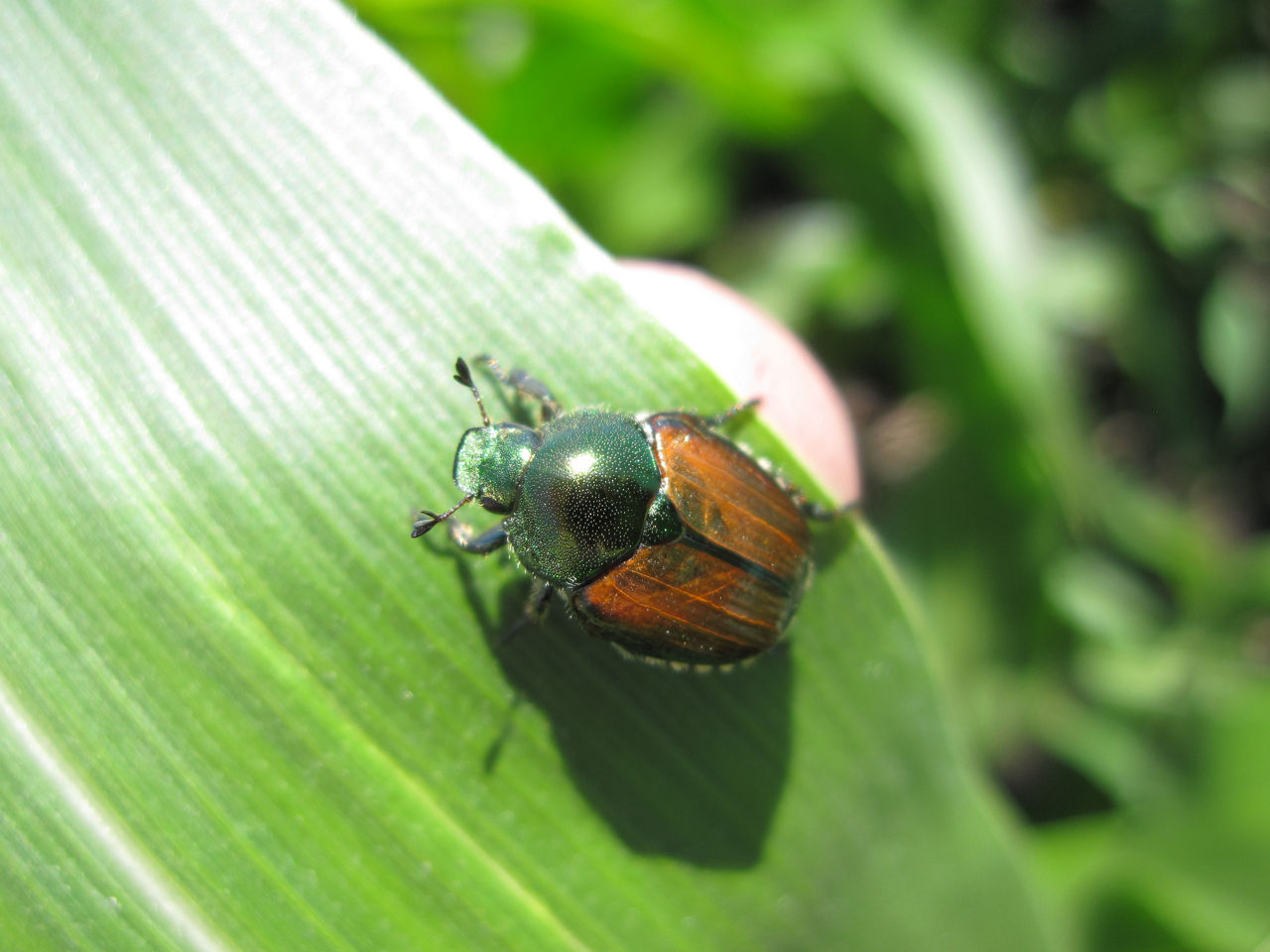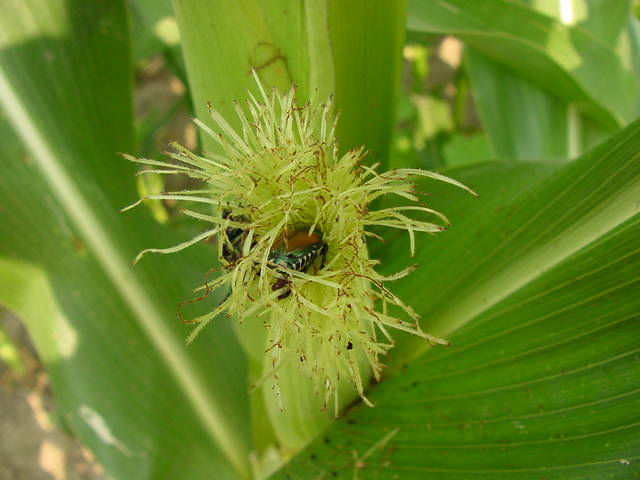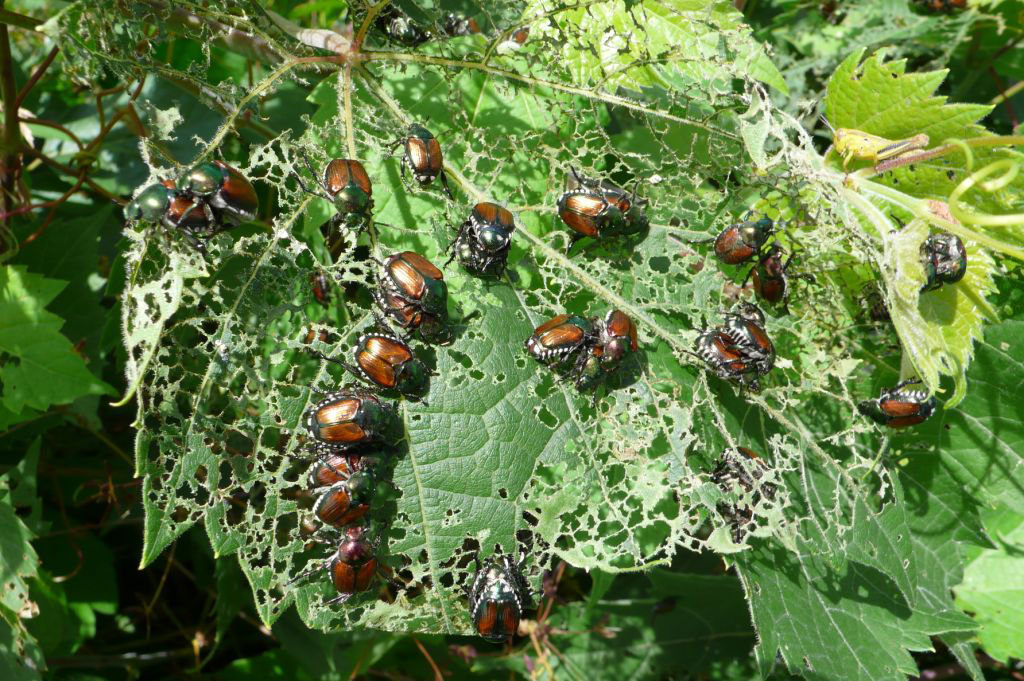Japanese Beetle Identification, Scouting, and Management in Corn and Soybean
June 16, 2025
Identification
Japanese beetle larvae are in similar appearance to other white grubs that live in the soil. Newly hatched larvae are 1/8 of an inch in length and grow to about an inch. Larvae are C-shaped, have a soft and plump body, white to grayish in color with a brown head, have six legs, and can be distinguished from other white grubs by a triangulated hair arrangement on its raster (Figure 1). An adult Japanese beetle is about 1/3 to 1/2 inch in length, oval-shaped with antennae, has a shiny metallic-green body and coppery-bronze wing covers, and has five white tufts of hair on each side of the abdomen and two below the wings (Figure 2). Larvae can be found attacking corn, usually corn following sod, as Japanese beetle females prefer to deposit eggs in sod and not row crops.


Scouting
Corn:
Japanese beetles are an occasional pest to corn. While in the larval stage they feed on roots which can reduce water and nutrient uptake and cause aboveground symptoms that include the purpling of seedling corn leaves and stem, and wilting. If larval populations are one or more per cubic feet, plant stunting and stand loss can occur. Injury is the greatest in early planted fields due to early plant development.
Adult Japanese beetles scrape off the green surface tissue on leaves similarly to corn rootworm beetles. The main concern is silk clipping as this may interfere with pollination if silks are clipped severely (Figure 3). To measure a representative sample of silk clipping, assess ten plants in multiple locations of the field. Scouting is especially important in the first five days of silking.
A foliar insecticide is warranted if three conditions are met:
- Three or more beetles per ear
- Silks are clipped to 1/2 inch or less
- Pollination is less than 50%

Soybeans:
When scouting soybean, it is important to look at the whole canopy across the entire field because defoliation may be concentrated at field edges. In soybean, Japanese beetle feeding causes leaf skeletonization where the beetle feeds on the leaf tissue but leaves the leaf veins intact (Figure 4). Japanese beetles feed from top to bottom but typically feed on the top of the canopy.
A foliar insecticide may be warranted if there is an average across the field of:
- 30% defoliation before bloom or
- 20% defoliation after bloom
After treatments, scouting should continue as the adults are highly mobile and may reinfest the field after an insecticide application.

Channel Agronomist
Monica Marrs
Sources
Vittum, P. 2011. White grub identification. UMass Extension. Center of Agriculture. University of Massachusetts. https://www.umass.edu/agriculture-food-environment/sites/ag.umass.edu/files/fact-sheets/pdf/white_grub_ID.pdf
Dean, A. and Hodgson, E. 2022. (original by Rice, M.E. with Hodgson, E. 2017 update) Japanese beetle in corn and soybean. Integrated Crop Management. Iowa State University Extension and Outreach. Iowa State University. https://crops.extension.iastate.edu/encyclopedia/japanese-beetle-corn-and-soybean
Web sites verified 4/28/25 1110_568259